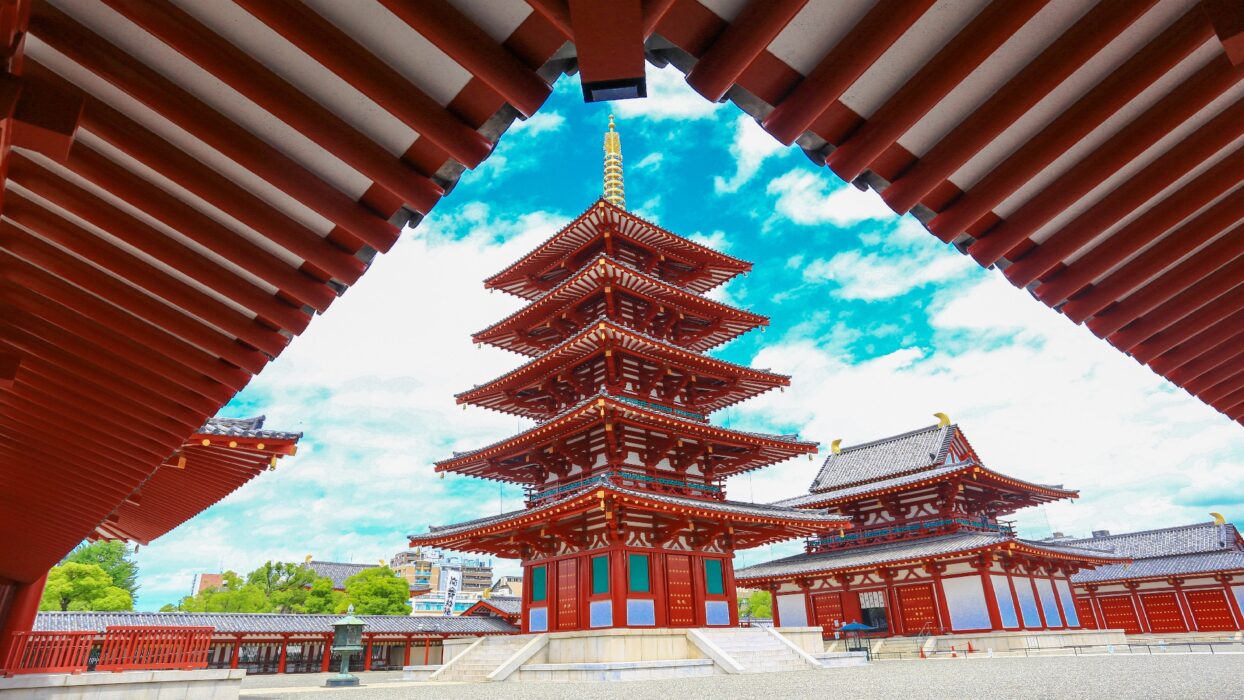Welcome to Fushimi Inari Shrine: A Must-See in Kyoto!
Step into a world where spirituality meets stunning natural beauty at Fushimi Inari Shrine, one of Kyoto’s most cherished treasures. Nestled at the base of Mount Inari, this iconic shrine is dedicated to Inari, the Shinto god of rice, and is renowned for its thousands of vibrant red torii gates that create enchanting pathways through the lush greenery. As you wander through this sacred space, you’ll find yourself immersed in a rich tapestry of history, culture, and breathtaking sights.
Visitors flock to Fushimi Inari for its unique blend of spiritual significance and stunning scenery. Whether you’re a history buff, a nature lover, or simply looking to capture the perfect Instagram shot, this shrine offers something for everyone. You can expect to be greeted by the serene atmosphere of the shrine, the playful presence of fox statues, and the warm smiles of fellow travelers. Get ready for an unforgettable experience as we guide you through everything you need to know about this remarkable destination in our Fushimi Inari travel guide.
Discovering the Cultural Significance of Fushimi Inari Shrine
Fushimi Inari Shrine has a storied history that dates back to 711 AD, making it one of the oldest Shinto shrines in Japan. It serves as a place of worship for those who seek blessings from Inari, particularly farmers and merchants who rely on rice cultivation and trade. The shrine’s significance extends beyond its spiritual role; it is deeply woven into the fabric of local community life, hosting numerous festivals and events that celebrate the connection between the people and their patron deity.
As you stroll through the shrine, take a moment to appreciate the Fushimi Inari history that surrounds you. The main shrine, known as the Honden, is adorned with intricate carvings and traditional architecture that reflect the artistry of the era. Many visitors share personal stories about their experiences at the shrine, often describing feelings of peace and connection to nature. One traveler remarked, “Walking through the torii gates felt like stepping into another world, where every gate told a story of devotion and hope.” Such testimonials highlight the cultural significance of Fushimi Inari and its ability to touch the hearts of those who visit.
The Enigmatic Foxes of Fushimi Inari
As you explore the shrine, you’ll encounter the enchanting foxes, or kitsune, that are integral to its mythology. These clever creatures are revered as messengers of Inari and are often depicted holding a key in their mouths, symbolizing access to the rice granaries. The presence of kitsune statues throughout the shrine adds an air of mystique and charm, inviting you to learn more about their role in Japanese culture.
Many of the Fushimi Inari foxes are beautifully crafted, each with unique expressions and poses. One particularly famous statue can be found near the main shrine, and visitors often stop to take photos and leave offerings. The folklore surrounding kitsune is rich and varied, with tales of their magical abilities and transformations. As one visitor shared, “I felt a connection to the foxes, as if they were guiding me through my own journey.” These stories not only enhance your visit but also deepen your appreciation for the cultural significance of these mystical beings.
Festivals that Light Up Fushimi Inari
When you visit Fushimi Inari Shrine, you’re not just stepping into a historical site; you’re entering a lively hub of celebration! The Fushimi Inari Festival, held annually in early February, is a spectacular event that showcases the shrine’s cultural vibrancy. With vibrant processions, traditional music, and mesmerizing dance performances, this festival draws both locals and tourists alike.
The highlight of the festival is the grand procession of mikoshi (portable shrines), which are paraded through the torii gates, creating a breathtaking sight. Don’t miss the chance to indulge in local delicacies from food stalls that pop up during this festive time. Some must-try treats include yakitori (grilled chicken skewers) and taiyaki (fish-shaped cakes filled with sweet red bean paste). The atmosphere is electric, with lanterns lighting up the shrine, adding a magical glow to the night.
Mark your calendar for the Fushimi Inari Festival and experience the rich traditions and community spirit that make this shrine a beloved landmark in Kyoto. For a full festival schedule, check local listings or visit the shrine’s official website for updates.
Hiking Through the Iconic Torii Gates
Ready to lace up your hiking boots? The trails at Fushimi Inari are waiting for you! The shrine features a network of hiking paths that wind through the thousands of torii gates, offering a unique opportunity to connect with nature while soaking in the spiritual ambiance. The main trail stretches approximately 4 kilometers and takes about 2 hours to complete, but feel free to take your time and enjoy the sights along the way.
As you hike, keep an eye out for scenic viewpoints that provide stunning panoramas of Kyoto and the surrounding mountains. The best time to tackle this hike is early in the morning or late afternoon when the sun casts a warm glow over the gates, creating picture-perfect moments. Don’t forget to bring your camera to capture the beauty of the Fushimi Inari torii gates in various lighting!
Safety tip: Wear comfortable shoes and stay hydrated, especially during warmer months. Many hikers suggest starting from the base and making your way to the summit for the best experience. So, what are you waiting for? Get out there and explore!
A Culinary Adventure at Fushimi Inari
After a day of exploring, your taste buds deserve a treat! The area around Fushimi Inari Shrine is filled with delicious local food offerings that are sure to satisfy your cravings. One standout dish you must try is inari sushi, a delightful combination of vinegared rice wrapped in sweet, fried tofu pouches. It’s both tasty and a perfect snack to enjoy as you wander through the shrine.
If you’re in the mood for something warm, yudofu (tofu hot pot) is a popular choice among visitors. Served with a variety of dipping sauces, this dish is not only comforting but also a great way to experience traditional Kyoto cuisine. And don’t forget to try yaki imo (roasted sweet potatoes) from one of the street vendors; they are especially popular in the colder months!
Pair your meal with some matcha (green tea) or a local sake for a full culinary experience. Engaging with local vendors is a fantastic way to learn about the dishes and the region’s food culture. Your taste buds will thank you!
Practical Information for Your Visit to Fushimi Inari
Before you head out to experience the magic of Fushimi Inari Shrine, here are some practical tips to ensure your visit goes smoothly. The shrine is open 24 hours a day, making it accessible for early risers and night owls alike. There’s no admission fee, so you can soak in the beauty of the shrine without worrying about ticket costs!
For transportation, the shrine is conveniently located just a short walk from Inari Station on the JR Nara Line. If you’re coming from Kyoto Station, it’s a quick ride that takes around 5 minutes. For those traveling by bus, several routes serve the area, and you can easily find information on local bus schedules.
Accessibility is also a consideration; while the main path is suitable for most visitors, some trails can be steep and may pose challenges for those with mobility issues. If you have any concerns, consider bringing a companion for support or planning your route to include the easier paths.
Seasonal Highlights at Fushimi Inari
Every season brings a unique charm to Fushimi Inari Shrine, making it a fantastic destination year-round. In spring, the cherry blossoms bloom, creating a stunning backdrop for the red torii gates. Imagine walking through a tunnel of pink and red—it’s a sight you won’t forget!
Autumn transforms the shrine into a canvas of fiery reds and golds as the leaves change colors. This is a photographer’s paradise, so be sure to have your camera ready! The seasonal festivals held throughout the year also add to the vibrant atmosphere, with each celebration reflecting the rich traditions of Kyoto.
For the best photography opportunities, visit early in the morning or during the golden hour before sunset. The soft light enhances the beauty of the gates and the surrounding landscape, making your photos truly magical.
Safety and Health Guidelines for Travelers
Your safety and well-being are paramount during your visit to Fushimi Inari Shrine. With the ongoing global health considerations, it’s wise to stay updated on any travel advisories or health protocols. Wearing a mask in crowded areas and practicing social distancing can enhance your experience while keeping you safe.
Ensure you have hand sanitizer handy, especially after touching surfaces or interacting with others. If you’re visiting during peak seasons, arriving early can help you avoid large crowds and allow for a more peaceful experience as you explore the shrine’s beauty.
Fun Facts About Fushimi Inari Shrine
Did you know that Fushimi Inari has over 10,000 torii gates? Each gate is donated by individuals or businesses, and the inscriptions on the gates serve as a tribute to their contributions. The oldest gates date back to the 8th century, making them a fascinating piece of history!
Another fun fact: the shrine is dedicated to Inari, the god of rice, but it also serves as a protector of agriculture and prosperity. This is why you’ll see so many fox statues—kitsune are considered the messengers of Inari, symbolizing abundance and fertility.
Whether you’re a history buff or just looking for some quirky trivia to impress your friends, these fun facts add an extra layer of appreciation to your visit!
Shopping and Souvenir Recommendations
Before you leave Fushimi Inari, don’t forget to check out the local shops and stalls for unique souvenirs. From traditional crafts to delicious snacks, there’s something for everyone. Look for omamori (protective charms) that are sold at the shrine; these make wonderful mementos of your spiritual journey.
For foodies, consider picking up some local sweets or snacks to take home. Yatsuhashi, a sweet made from rice flour and cinnamon, is a popular choice. It’s a tasty treat that embodies the flavors of Kyoto. If you’re looking for something more decorative, handcrafted pottery and textiles from local artisans can be a perfect addition to your collection!
Transportation Tips for Getting to Fushimi Inari
Getting to Fushimi Inari Shrine is a breeze! If you’re using public transport, the JR Nara Line is your best bet. Just hop on a train from Kyoto Station, and you’ll be at Inari Station in no time. Follow the signs, and you’ll find yourself at the shrine entrance in just a few minutes.
For those driving, there are parking options available, but they can fill up quickly, especially during peak tourist seasons. Consider using a taxi or rideshare service if you prefer a hassle-free experience. And don’t forget to check out a map of the area to help you navigate your way around!
Commonly Asked Questions About Fushimi Inari
Curious about what to expect at Fushimi Inari Shrine? Here are some frequently asked questions that might help:
- What’s the best time to visit? Early mornings or late afternoons are ideal for fewer crowds and stunning lighting for photography.
- Can I take photos? Absolutely! Just be respectful of others and the sacred space.
- Is there an entrance fee? No, the shrine is free to visit!
- Are there restroom facilities? Yes, restrooms are available near the main entrance.
These tips will help you make the most of your visit and ensure you have a memorable experience at this iconic shrine.
Whether you’re drawn by the cultural significance, the breathtaking scenery, or the delicious food, Fushimi Inari Shrine promises an adventure that will leave you with lasting memories. So pack your bags, grab your camera, and get ready to explore this enchanting destination!










